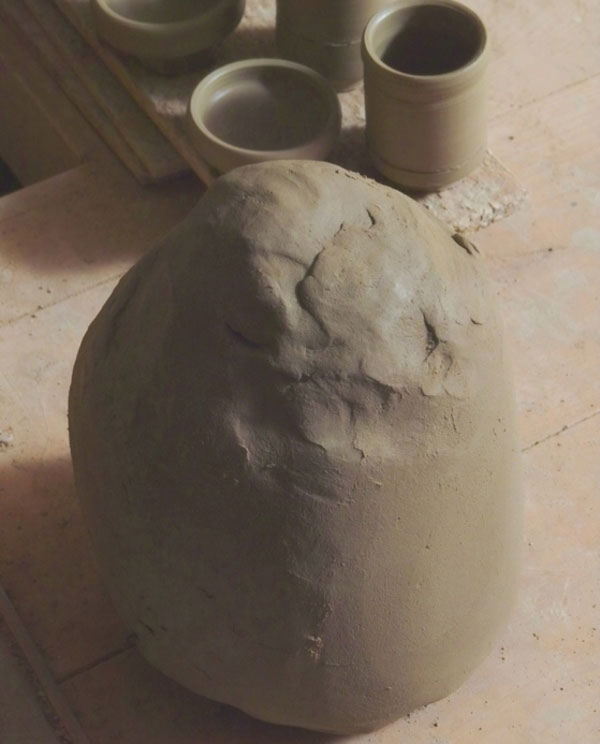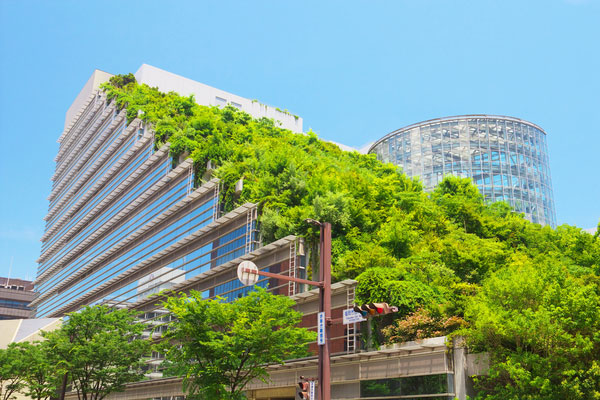 Photo:Fukuoka City
Photo:Fukuoka City
- Ceramic
- Fukuoka
Agano ware Agano yaki
Rare variety of lightweight ceramics
derived from the tea ceremony culture
Description
What is Agano ware ?
Agano ware (called Agano yaki) is a form of pottery produced around the town of Fukuchi in Fukuoka prefecture. Agano ware is elegant and lightweight, stemming from its development as a tea bowl for use in tea ceremonies.
In some cases, the foot of the bowl is taller than other types of pottery and opens onto a wide base. Many different types of enamel are used, like blue-green, iron, white-brown, and transparent, producing a diversity of colors, textures, luster, and patterns. The most representative enamel for Agano ware is a green rust using oxidized copper, which gives an attractive blue color. Ceramics using iron enamel look like an unglazed reddish brown and spotted enamel ends up with an evenly lined grain that appears to have been eaten by insects. While there is an infinite variety of vessels, they all share a graceful quality.
History
Agano ware is said to have begun in 1602 when the lord of the Kokura domain, famed for being a master of the tea ceremony, brought Sonkai, a potter from Korea's Joseon Dynasty (1392-1897), to build a climbing kiln* in Agano (now part of Fukuoka prefecture).
Although Sonkai had to move out of Agano in 1632, his child, Magozaemon TOTOKI remained and continued the pottery under the next lord of the domain. In the middle of the Edo period (1603-1868), the climbing kiln that Sonkai had built was praised as one of seven kilns in distant provinces and became widely known throughout society. Sonkai's climbing kiln continued to be used for the official business of successive generations of lords until the end of the Edo period. The abolition of domains and the establishment of prefectures during the start of Meiji period (1868-1912) is thought to have caused a temporary decline in Agano ware, but in 1902 it was revived with support from the government.
*A climbing kiln is an ancient type of pottery kiln brought to Japan from China and Korea that is formed by digging a hole in the hillside.
General Production Process
 Photo:Fukuoka City
Photo:Fukuoka City
- 1. Base clay excavation
Good quality clay is collected from the mountains near Fukuchi, Fukuoka. Then the clay is dried.
- 2. Turning the clay into powder
The collected clay is finely ground by machine. Next, the ground clay is sieved and the best quality clay is selected. Clay with large particles remaining in the sieve is thrown away.
- 3. Filtering clay in water
Sieved good quality clay is placed inside a water tank and mixed with water. A technique known as elutriation, where the water is filtered and fine-grain clay is sorted, is done to further select good quality clay. The moisture contained in the clay is reduced by scrubbing with a cloth and leaving out to air dry.
- 4. Mechanical kneading
Clay that has hardened is kneaded by machine and molded into a cylindrical form.
- 5. Hand kneading
Clay that has been kneaded by machine is now slowly kneaded by hand. Time must be spent kneading in order to ensure that air bubbles contained in the clay are extracted.
- 6. Producing a form with a lathe
Once the clay has been sufficiently kneaded, it is cast with a lathe.
- 7. Half-drying, finishing, and drying
Cast clay is placed in a shelf shaped location, and left until it is partially dry. Then, the base is smoothed and handles are attached to finish. The finished articles are then flatly aligned and further dried in the sunlight for two to three weeks.
- 8. Bisque firing
The dried pottery is fired inside the kiln. This bisque firing process, the first firing before any glaze is applied, makes it easier to apply enamel and produce color deformation by firing in the kiln. Pieces are loaded inside the kiln without any gaps between them, and are baked for around five to six hours at a temperature of about 800 to 850℃ (about 1472 to 1562℉). Only items deemed to be acceptable by the artisan proceed to the processes of glazing and glaze firing.
- 9. Glazing
Articles that have successfully passed the bisque firing stage are coated with enamel, or glaze. A glassy texture with beautiful color and luster is produced from glazing and firing. The standard enamel is blue-green, which contains copper. This enamel has an appealing vivid blue-green color change that occurs during firing. A wide range of other enamels is also used, including iron enamel, white-brown enamel, ash glaze, tri-colored enamel, transparent glaze, and irabo (golden brown) glaze.
- 10. Glaze firing
Wood-fired kilns and gas kilns are used for glaze firing. In the case of gas kilns, pots are fired for around ten hours.
Baked Agano ware uses an abundance of enamel for its color and texture so a variety of hues and textures can be produced. Some of the diverse colors and textures include yuzu skin, which has the feel of yuzu citrus fruit peel; bug eaten enamel, which has a granular skin that appears to have been eaten by insects; wood grain, which produces a wood grain pattern using clay with two colors; and tri-colored, where three kinds of enamel can be enjoyed in a single item.
Where to Buy & More Information
Takumi Art & Craft Gallery

-
Address
-
Tel.+81-92-725-9100
-
Closed2nd and 4th Monday of the month
-
Business Hours10am to 7pm
-
Website
See more Ceramic
- Imari ware/Arita ware
- Hasami ware
- Kutani ware
- Mashiko ware
- Shigaraki ware
- Bizen ware
- Hagi ware
- Koishiwara ware
- Mino ware
- Tobe ware
- Tokoname ware
- Karatsu ware
- Kasama ware
- Satsuma ware
- Iga ware
- Mikawachi ware
- Agano ware
- Otani ware
- Obori-soma ware
- Tsuboya ware
- Aizu-hongo ware
- Shodai ware
- Echizen ware
- Akazu ware
- Tamba-tachikui ware
- Yokkaichi-banko ware
- Izushi ware
- Kyo ware/Kiyomizu ware
- Iwami ware
- Amakusa ceramics
- Seto-sometsuke ware
- Sanshu Onigawara Crafts































































































































































































































































































